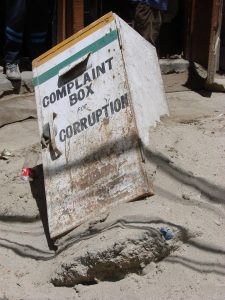
Bribery and corruption continue to plague governments and organizations around the world. Brazil’s Operation Car Wash, the 1MDB scandal in Malaysia, the FIFA bribery case and many others continue to make headlines. The prevalence of widespread, coordinated corruption and bribery is alarming and seems to continue to grow, despite ongoing sanctions and fines meant to deter these actions.
Money must be exchanged to prove bribery and corruption in a court of law, and often that money comes from an organization’s coffers. Although it's rare that a general ledger entry cites “bribe” in the memo line, it's still possible to identify illicit payments and unusual transactions that could be facilitating bribery and corruption. This type of fraud can appear in financials as one-time payments to third parties or can surface as overpayments on invoices.
Where can an organization start to improve internal processes and controls to safeguard against these actions?
Start with the suppliers
Supplier relationships offer an avenue for moving money to ‘pay for play’ or to flat-out bribe someone. We can better safeguard organizations from this type of fraud, and ensure supplier integrity, by more thoroughly vetting the supplier base and keeping a closer eye on the books.
To make payments to outside entities, organizations must set up these payees in their ERP systems. Most organizations today have formal processes for onboarding new suppliers, either through due diligence or more rigorous reviews mandated by regulators. Regardless of an organization’s approach, most entities only perform due diligence once and rarely continue monitoring the supplier base for risk. This can be a costly mistake.
With the changing global economic climate and dynamic risks, it’s never been more important to monitor supplier integrity and audit the supply base. Just because a supplier is reputable and reliable now doesn’t mean someone won’t become desperate if the company starts taking losses.
Supplier integrity risk changes over time. How can you keep up?
Some organizations are turning towards digital transformation programs to support supplier risk efforts, whereas others have adopted continuous monitoring programs to automate what typically is a time-consuming manual process. SAS helps clients use technology and analytics to not only automate these processes but also apply analytics to the various data streams to risk-score and prioritize vendors for audit and risk.
Organization can dig deeper using transactional data available within an enterprise resource planning (ERP) system. The Procure-to-Pay cycle offers a treasure-trove of rich data that can help us better monitor supplier activities from keeping up on mergers and acquisitions to surveilling for fraud, waste and abuse. Ongoing business operations can feed an automated system to stay on top of variations across pricing, transactional anomalies, and even ineffective controls that can help to surface improper payments and risk within the supply chain.
These patterns of activities can also point to unusual payments that can be linked to bribery and corruption, providing organizations the much-needed indicators and warnings to stay out of the headlines and keep the business free of fines and reputational damage.
To learn more about how Supplier Integrity or Procurement Integrity can help your organization transform visit https://www.sas.com/en_us/software/continuous-monitoring-procurement-integrity.html.
